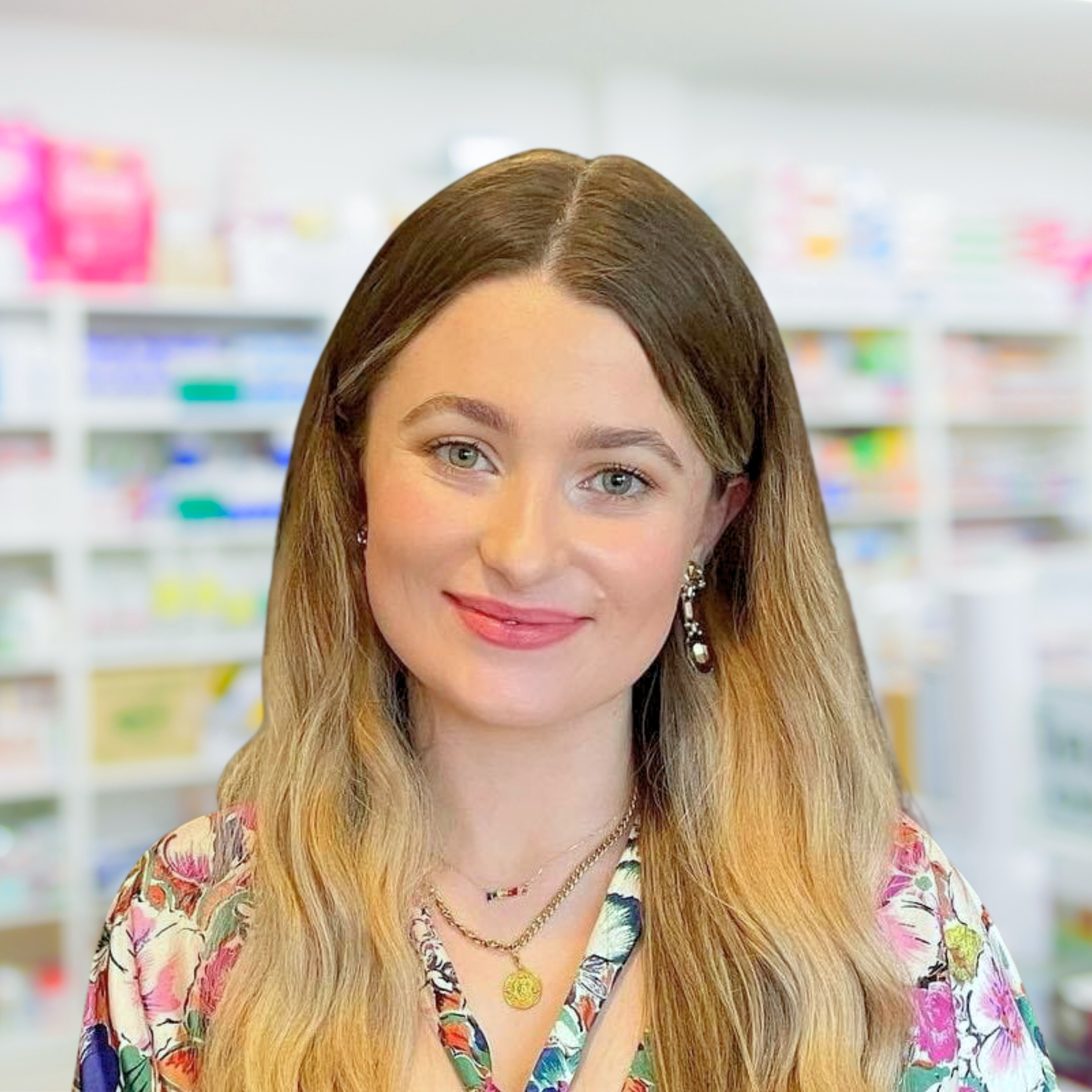Obesity & Weight Loss - Symptoms, Causes & Treatment

Obesity refers to the state of being very overweight with a lot of body fat. It is one of the most common medical conditions in the UK, with an estimated 1 in every 4 adults considered to be obese and 1 in every 5 children aged 10 to 11.
Risk factors for obesity include overeating, inactivity, certain medications or underlying health conditions. Unfortunately, it can come with serious health risks like type 2 diabetes, hypertension (high blood pressure) and heart disease. It’s also linked to mental health problems like poor self esteem, depression, anxiety and certain eating disorders.
Obesity can be tackled with lifestyle changes, medication or even surgery to reduce the risks of severe long-term complications. Unfortunately, it isn’t generally an easy condition to overcome.
Symptoms
Obesity refers to those with a BMI (body mass index) over 30. The only symptom of obesity itself is excess body fat. But the condition can come with a whole range of associated problems:
- Breathlessness
- Increased sweating
- Snoring
- Difficulty exercising
- Persistent tiredness
- Joint and back pain
- Low self esteem
- Feeling isolated
Calculating your BMI

If you’re unsure whether or not you’re obese, you should consider calculating your BMI. It is important to note, however, that BMI is not always a completely accurate measure for your health.
For most adults, a BMI of:
- 18.5 to 24.9 means you're a healthy weight
- 25 to 29.9 means you're overweight
- 30 to 39.9 means you're obese
- 40 or above means you're severely obese
If you’re muscular, you should not rely on your BMI to indicate whether or not you’re a healthy weight. This is because muscle weighs more than fat, so muscular people can have a high BMI even if their body fat percentage is very low.
A better way to indicate excess fat is by measuring your waist size. According to the NHS, men with a waist size of 94cm or more and women with a waist size of 80cm or more are more likely to develop obesity-related health problems.
Complications
Alongside the symptoms related to being obese, like shortness of breath and low self esteem, obesity also comes with the risk of developing long-term health conditions, some of which can be serious. These include:
- Type 2 diabetes
- Hypertension (high blood pressure)
- Coronary heart disease
- Certain types of cancer (i.e breast cancer, bowel cancer)
- Stroke
- Asthma
- Osteoarthritis
- Gastro-oesophageal reflux disease (GORD)
- Sleep aponea
Obesity is thought to reduce life expectancy by around 3 to 10 years. An NHS report of hospital admissions in 2019/20 states that over 10,000 admissions were directly attributable to obesity. As well as this, obesity was a contributing factor in over a million admissions.
Causes
A lack of exercise and excessive eating lead to obesity. If you’re consuming more calories than your body is burning, this will lead to weight gain and can result in obesity.
Gaining too much weight can be all too easy with the modern lives we lead. With so many jobs now requiring workers to sit at a computer all day, it can be difficult for many of us to stay physically active. Those who are working full time and leading busy lives may also be more likely to eat convenient processed foods with a lot of calories, rather than nutritious home cooked meals.
Overeating can also be a result of mental health problems like depression and low self esteem. If you tend to comfort eat when you’re feeling down or stressed, this could easily lead to obesity.
Drinking too much alcohol can also increase your risk of obesity. Alcohol has a lot of calories, so drinking on a regular basis may cause you to gain weight even if you have an otherwise healthy diet.
In some cases, certain medical conditions can cause obesity. These include hypothyroidism, where your thyroid gland doesn’t produce enough hormones, and Cushing’s syndrome, a rare disorder that causes the overproduction of steroid hormones. If these conditions are diagnosed and treated accordingly, patients should find it easier to lose weight.
Some medications can also make it easier to gain excess weight, including corticosteroids, antidepressants and medicines to treat epilepsy and diabetes.
Diagnosis
Obesity is usually diagnosed on a basis of your BMI being of 30 or more, unless you’re muscular. It can also be diagnosed based on your waist size.
Your GP won’t need to do any tests to diagnose you with obesity, but they may carry out tests to check your risk of developing obesity-related complications. These tests may include a blood pressure check and a blood test to examine your glucose and cholesterol levels.
When to see your GP
Obesity can lead to serious health problems, so you should consider visiting your GP if you’re obese and struggling to lose weight. Your GP or practice nurse can help to identify the cause of your weight gain and create a weight loss program that suits you.
If a regular diet and exercise program doesn’t work, GPs will sometimes recommend weight loss medication to treat obesity. These medications typically work by helping you to stick to a low calorie diet.
Treatment
Obesity treatment typically starts with a low calorie diet and exercise plan, and then progresses onto medications or weight loss surgery if unsuccessful.
One key component that always plays a role in the treatment of obesity is willpower. Even with medical treatment, losing a lot of weight requires dedication and a strong commitment to change your lifestyle.
Lifestyle changes
Changing your diet is the best way to tackle obesity. If you’re obese, chances are you may be eating too many high calorie foods and your portions may be too big.
The NHS BMI calculator lets you know how many pounds you should ideally aim to lose if you’re overweight or obese, and it tells you how many calories you should consume each day to reach that target in a healthy manner.
It’s important to note that drastically reducing your calories and heavily restricting your diet can do more harm than good. Crash dieting is bad for your physical and mental health, and setting unrealistic calorie goals means you’ll be more likely to give up and binge on the foods you’ve been denying yourself.
Creating a healthy diet that you can stick to, with the occasional treat, is the best way to lose weight and keep it off long term. A healthy diet should consist of:
- Plenty of fruits and vegetables
- Plenty of potatoes, bread, rice, pasta and other starchy foods (ideally whole grain varieties)
- Some milk and dairy foods
- Some meat, fish, eggs, beans and other non-dairy sources of protein
- Only small amounts of food and drinks that are high in fat and sugar
Tackling obesity is largely down to dietary changes, but increasing physical activity is also important for maintaining a healthy body weight. It's the advice that adults should do a minimum of 150 minutes of moderate-intensity exercise every week. That’s any type of activity that increases your heart rate, such as:
- Brisk walking
- Cycling
- Swimming
- Dancing
The trick is to find an activity you genuinely enjoy doing. There’s no point in wasting money on a gym membership if you don’t enjoy going to the gym. Discover a different way to exercise that you can stick to, even if it’s just something as simple as walking.
NHS weight management service
If you’ve struggled to implement the lifestyle changes necessary to tackle obesity by yourself, the NHS has tiered weight management services to help.
Obesity is a difficult condition to tackle alone, so here’s no shame in seeking medical help. There are plenty of options available to help you along your weight loss journey.
Tier 1 - Community & local council initiatives
The first tier is about finding the right support available to help you create positive lifestyle changes.
Your local authority or local NHS trust may offer free weight management services. Support may be available in the form of one-to-one appointments, physiotherapy, occupational therapy, psychological support and exercise groups.
Alternatively, the NHS Digital Weight Management Programme is designed to support adults living with obesity alongside a diagnosis of diabetes or hypertension. It’s a free 12-week online behavioural and lifestyle program designed to help you manage your weight and improve your health.
Tier 2 - Medication from your GP
GPs will sometimes prescribe orlistat for people living with obesity who have struggled to lose weight through diet and exercise alone.
Orlistat works by blocking chemicals in your gut that digest fat. This means a third of the fat you eat won't be absorbed by your body. The undigested fat will pass through your body naturally. So it’s important to stick to a low-fat diet while taking this medicine to avoid unwanted side effects.
Other prescription-strength weight loss medications are available, however these aren’t usually available through your GP. Semaglutide (Wegovy) a type of weight loss injection which works by reducing your appetite, and while this isn’t available on the NHS yet it can be prescribed by a private healthcare team. If you prefer tablets, a combination of naltrexone and bupropion (Mysimba) has a similar effect.
Tier 3 - Assessment for surgery
If all other methods have failed, the NHS will sometimes offer weight loss surgery, sometimes referred to as bariatric or metabolic surgery, for people who are very obese. It is available to those who:
- Have a BMI of 40 or more, or a BMI between 35 and 40 and an obesity-related condition that might improve if you lost weight (such as type 2 diabetes or high blood pressure)
- Have tried other weight loss methods like dieting and exercise without success
- Have agreed to long-term follow-up after surgery, such as making healthy lifestyle changes and attending regular check-ups.
A multi-disciplinary team will assess your compatibility for surgery and you will be assessed by a psychologist. The team will be analysing your ability to adapt to changes and potential challenges in your lifestyle after surgery.
A newer option in tier 3 is treatment with liraglutide (Saxenda) for up to two years. As this drug lowers your appetite and reduces your ability to eat large amounts of food, results can be similar to bariatric surgery.
Tier 4 - Surgery
If you're accepted for surgery, you’ll be referred to a specialist Bariatric Team to discuss your options. There are different types of weight loss surgery, the most common of which include:
- Gastric band. This is where a band is placed around your stomach so you don’t need to eat a much to feel full
- Gastric bypass, where the top part of your stomach is joined to the small intestine, so you feel fuller sooner and don’t absorb as many calories from food
- Sleeve gastrectomy, where some of your stomach is removed, so you can’t eat as much as you could before and you’ll feel fuller sooner
Weight loss surgery can be very effective and lead to significant weight loss, but it doesn’t come without its disadvantages. Having this type of surgery can leave you with the inability to eat certain foods and result in long term side effects like chronic nausea, acid reflux, vomiting, bowel obstruction, low blood sugar and malnutrition.
Prevention
If your BMI is in the overweight category, it’s important to take the necessary steps to prevent yourself from becoming obese.
The best way to prevent obesity is by limiting your intake of processed and unhealthy foods like cakes, biscuits, crisps, white bread and pasta, sugary breakfast cereals and deep fried foods.
You can start to do this by implementing some healthy ‘swaps’, like wholemeal bread instead of white bread, low-calorie margarine instead of butter, or sugar-free versions of fizzy drinks, for example. These small changes can have a big impact.
Choosing nutritious foods with enough fibre and protein, like lean meat and lots of fruits and vegetables, will help you stay full for longer. You’ll be much less likely to overeat or snack throughout the day.
Portion control can also be a problem people who are overweight or obese. Start weighing your food and taking note of how many calories are in a recommended portion - you may be eating more than you should without realising it.
As well as a healthy diet, the NHS also recommend 45-60 minutes of moderate-intensity exercise each day for people who are at high risk of becoming obese, or 60-90 minutes to avoid regaining weight after being obese. Moderate-intensity exercise includes any activity that gets your heart rate up.
Finally, if poor mental health is causing you to overeat, seeking psychological help could help you to feel better and prevent obesity. Looking after your body is important for mental health, and vice versa. If you think you’d benefit from support, find local NHS mental health services here.






